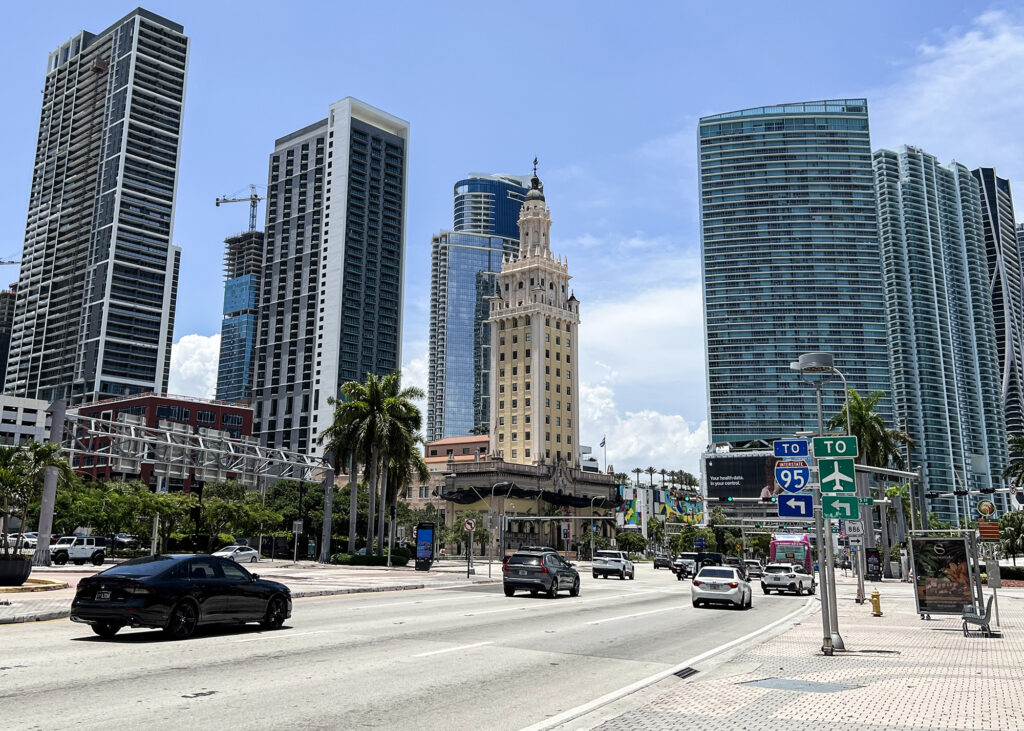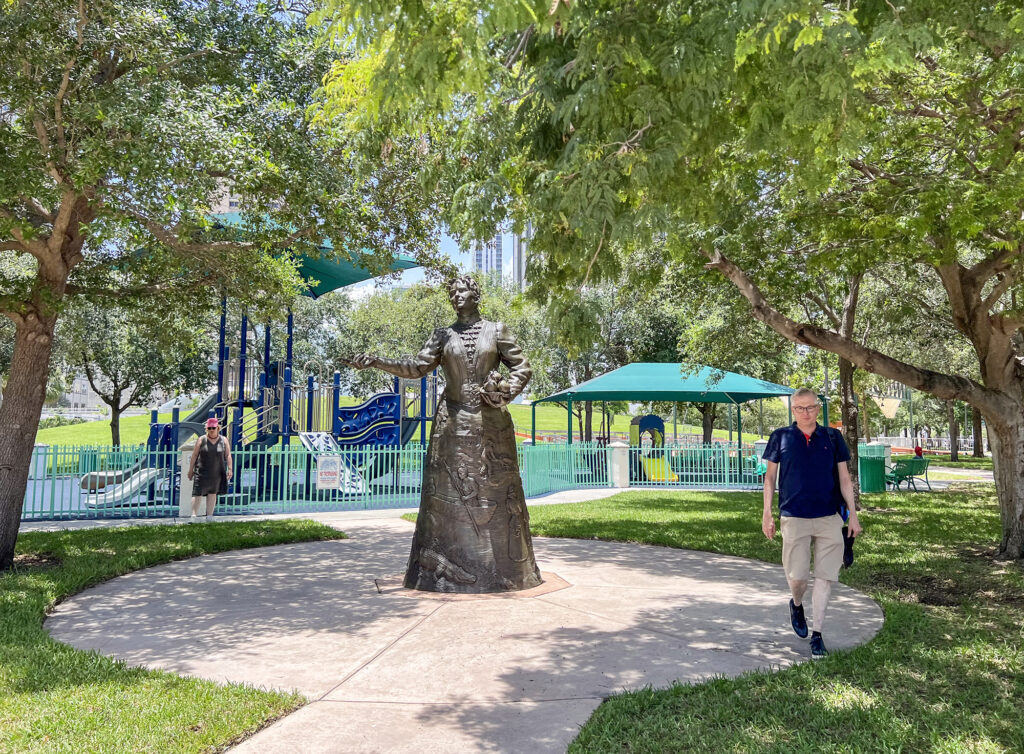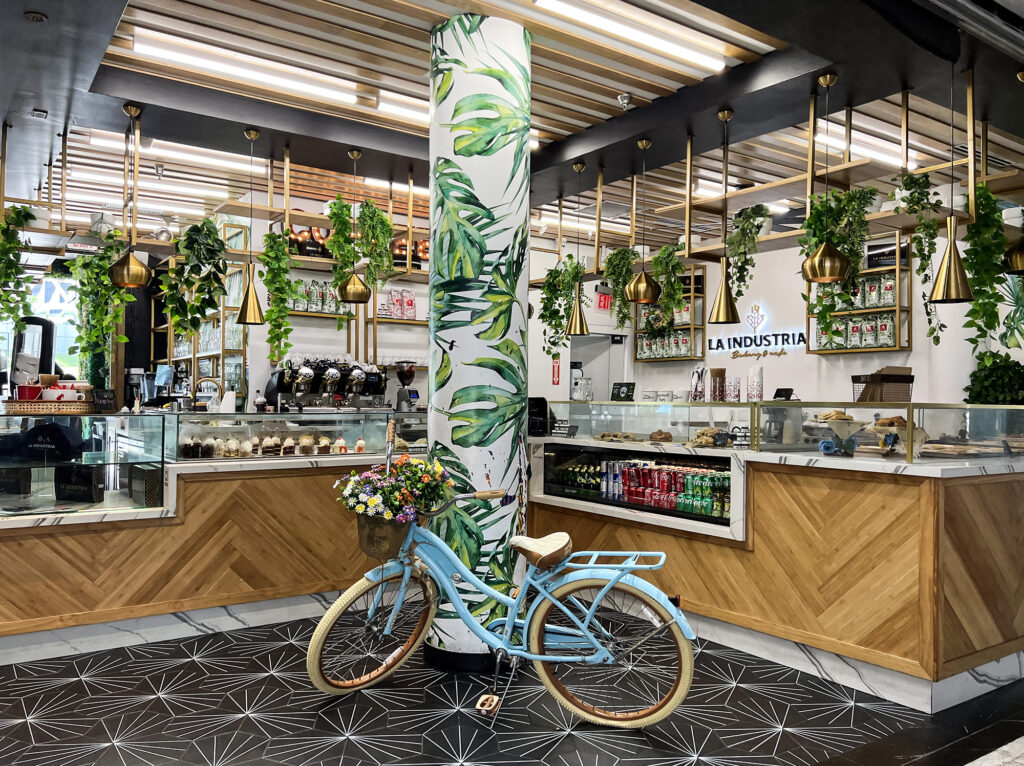Bienvenidos a Miami: The Latino Reporter’s guide to Magic City

The heat is rising, the mangos are fresh and the waves are calling — as Will Smith says, welcome to Miami.
Looking for something to do, a place to eat or how to get around at this year’s National Association of Hispanic Journalists conference? Look no further. The Latino Reporter has got your back here in Magic City.
Miami, a crossroads of culture and language, is known for its diverse culinary scene, vibrant night life and sparkling beaches.
“Any language that you hear in the Americas is spoken here readily,” said Domenic Caturello, a Miami resident who on Wednesday was taking his lunch break at Bayfront Park just beyond the threshold of the Intercontinental Miami Hotel.
Caturello said the city is “really welcoming” to people no matter where they come from.
Nancy San Martín, one of the 2023 NAHJ convention co-chairs, was born in East Los Angeles but grew up in Allapatah — a neighborhood in Miami. She was excited to welcome members and journalists from the NAHJ community to a city she loves.
“Miami is a special city, if you haven’t been here before, you’re really going to enjoy it,” said San Martín, at a Tuesday news conference with the Latino Reporter.

Top attractions near the convention
Vizcaya Museum & Gardens, 3251 S Miami Ave — a 1916 waterfront estate home and national historic landmark with 10 acres of gardens and 32 decorated rooms.
- It is open every day except Tuesday. The hours of operation are from 9:30 a.m. to 4:30 p.m.
- Tickets for adults (13 and over) cost $25, children between the ages of 6 and 12 are $10 and children of ages 5 and under enter for free.
Pérez Art Museum Miami, 1103 Biscayne Blvd — a contemporary art museum.
- Open Thursday to Monday from 11 a.m. to 6 p.m., on Thursday it closes at 9 p.m.
- Ticket prices range depending on discounts, but for adults it’s $16, for youth (7-18) it is $12 and children (0-6) enter for free.
Phillip & Patricia Frost Museum of Science, 1101 Biscayne Blvd — a science museum, aquarium and planetarium.
- Open every day from 10 a.m. to 7 p.m.
- Check admission prices here.
Wynwood Walls, 2516 NW 2nd Ave — street murals by artists from around the world.
- Open every day from 11 a.m. to 7 p.m. On Fridays it closes at 8 p.m. and on Saturdays it opens at 10 a.m. and closes at 8 p.m.
- General admissions are $12 for adults, $10 for seniors and military, $5 for students who present an identification card and children enter for free.
Places with Miami history

The Freedom Tower, 600 Biscayne Blvd
- A national historic landmark that served as a Cuban assistance center from 1962 to 1974 to help hundreds of thousands of Cuban refugees.
Julia Tuttle Statue, 301 N Biscayne Blvd in the Bayfront Park Path
- Miami is the only major city in the United States that was founded by a woman. He name was Julia Tuttle.
- In honor of the American businesswoman, there is a 10-foot-tall bronze statue of her that shows the story of the city’s incorporation in 1896 through scenes embroidered in the statue’s skirt.

Local Eateries… and don’t forget about the mangos
Eating Downtown or by the beach might be tempting, but beware of the price.
Ocean Drive, the road famously known as the Miami Beach street, has incredibly overpriced restaurants. That also applies to fast-food options.
Walking distance from the InterContinental Hotel is Bayside Marketplace, 401 Biscayne Blvd. The festival marketplace has many food and dining options, including Chili’s Grill & Bar and Five Guys. The relatively high prices in the area are reflective of the touristic location.
In general, Downtown Miami and Brickell also tend to be more expensive depending on the eatery. Brickell City Center, 701 S. Miami Ave., opens every day at 11 a.m. and has many food options, varying from sushi and tacos to bakeries and ice cream. The cost also varies.

A less expensive option close to the Miami International Airport is the Latin Cafe 2000, 875 N.W. 42nd Ave., which offers casual Cuban meals.
Other food hotspots are located in Little Havana and Wynwood.
It’s also mango season in Miami.
There are mangos all around the city from May through September.
Many locals who have a mango trees can indulge in the fruit frequently. A local Miami bakery even has offered them an alternative. Instead of having a yard filled with rotten fruit, people with excess mangos from their trees have been able to exchange them for a loaf of bread at Zak the Baker in Wynwood. But — sorry, conference-goers — the exchange ended in June.
People can also find mangos at farmers’ markets in Coconut Grove, Legion Park and Tropical Park.
Moving around Miami

Trolleys are a great way to get around the city for free ways. They operate in areas like Miami Beach, Brickell and Little Havana.
If you’re looking to move around Brickell and Downtown, the Metromover is another free transportation alternative.
Residents and visitors also use Freebee — a free shuttle service in areas like Downtown, Key Biscayne, Miami Beach and Coral Gables, with an app available to Android and iPhone users.
Paid services like Uber and Lyft are also another good option.
Stay cool
Whether you’re staying at the InterContinental Hotel or not, no one can escape the incredibly hot weather.
The Miami Herald reported last week that 2023 has been Miami’s hottest year, and the city has broken 15 daily peak temperature records.

Heat advisories issued in Miami-Dade County have consistently encouraged residents and visitors to stay hydrated, avoid outdoor activities during peak hours of the day and take breaks from the sunlight in shaded or cool areas. Wearing lightweight and light-colored clothing may also help.
So, carry a water bottle with you at all times, remember to take breaks and consider taking an umbrella for any walks.
Ammy Sanchez is a senior at Florida International University majoring in communications. She reports in English, Spanish and Portuguese, and is the producer of the South Florida Roundup — the Friday afternoon show at WLRN News. Reach her at ammysanchez001 [at] gmail [dot] com and on Twitter at @ammyelizabethh.